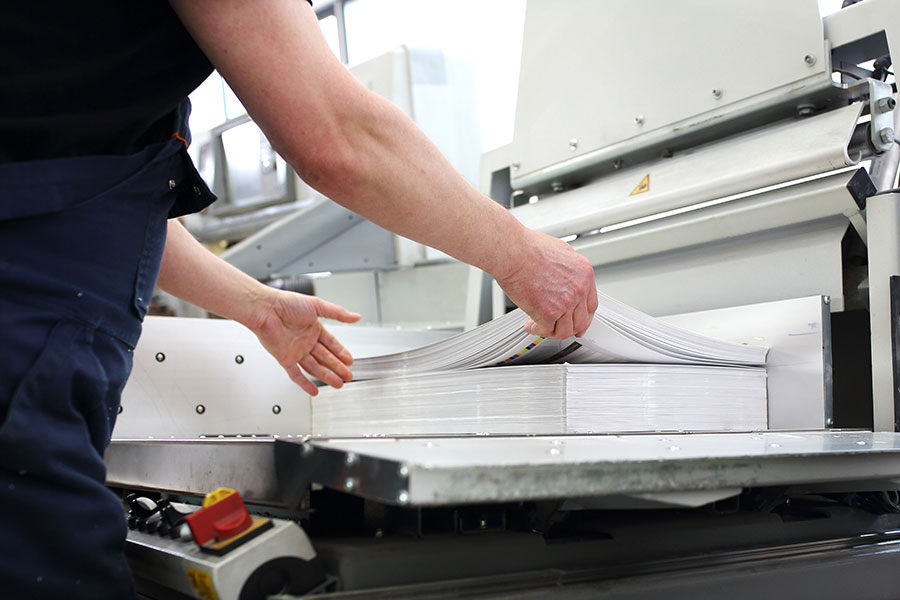Chemicals Market Intelligence
Unmatched Expertise, Time-Tested Excellence

Empower your business decisions with reliable chemical market intelligence.
We deliver accurate, actionable insights, drawing on over 70 years of combined experience in chemical market analytics.
Leverage our blend of experience and forward-thinking approach to understand and navigate the chemical market landscape. Minimize risks, boost profitability, and uncover new opportunities.
You can rely on our proprietary data and expert analysis, which is trusted by chemical producers, consumers, financial institutions, and government agencies globally.
Benefit from our 70+ years of combined experience in chemical market data and analysis, helping you make better-informed decisions. Request a demo of our powerful market intelligence platforms today.
Submit the Form to Request a Custom Demonstration
-
ACETIC ACID • VINYL ACETATE
For polyester fibers, PET bottles, food, pharma, paints, coatings and adhesives.
Acetic acid is a commercially important chemical intermediate used in the manufacture of plastics, paints and coatings, adhesives, pharmaceuticals, medicines, food ingredients, agrochemicals, and hygiene products.
Some key downstream derivatives of acetic acid include vinyl acetate monomer, a versatile material found in specialized polymers used in the construction and automotive industries, and purified terephthalic acid, which is used to produce polyester fiber and PET soft-drink bottles.
Another downstream derivative, acetic anhydride, is a fundamental raw material for the production of some commonly used pharmaceuticals.
-
AROMATICS
Benzene, toluene and isomers of xylenes – the ortho-, meta- and paraxylenes also known as BTX chemicals.
Among the petrochemical industry’s key building blocks, aromatics’ three main components are benzene, toluene and the three isomers of xylene. Streams consisting of these products are often referred to as ‘BTX’ streams.
Benzene is a major feedstock and is used for the production of ethylbenzene and styrene monomer, cumene and phenol, cyclohexane. As well as chlorobenzene, nitrobenzene, alkylbenzene, maleic anhydride and as a chemical intermediate. Benzene can be sourced from pyrolisis gasoline, toluene disproportionation and the hydrodealkalation of toluene.
Styrene is mainly used in plastics which include polystyrene — representing over 50% of demand — unsaturated polyester resins, ABS, SAN, and SBR. Derivatives are found everywhere from food-grade film to toys, construction pipes, foams, boats, latex paints, tyres, luggage, and furniture.
Cyclohexane is mainly consumed in the production of KA oil and caprolactam and adipic acid, which is then used for the manufacture of polyamide.
Paraxylene is the main feedstock for purified terephthalic acid (PTA) and dimethyl terephthalate (DMT). Intermediate chemicals, both are used to make polyethylene terephthalate (PET) textile fibers, water and soft drinks bottles, and some films. Paraxylene is separated from a mixed xylene stream, which also has value as a source of gasoline blending components.
Toluene is used primarily as an octane booster in gasoline. It is also used as a feedstock for benzene and xylenes. Other chemical applications include TDI – for flexible polyurethane foam – and solvents.
Mixed xylenes are usually extracted from reformate and can be separated into three different isomers: paraxylene, orthoxylene and metaxylene, with paraxylene being the isomer of highest demand. Mixed xylenes can also be used directly for blending into gasoline, or as a solvent.
Orthoxylene is produced along with paraxylene from a mixed xylenes stream. By far its major application is in the production of phthalic anhydride.
-
CHLOR-ALKALI & DERIVATIVES
Polycarbonate, isocyanates, epichlorohydrin and PVC precursor vinyl chloride monomer.
Caustic soda – or sodium hydroxide – is co-produced with chlorine by the electrolysis of sodium chloride. The output ratio is 1.1 tons of caustic soda for every ton of chlorine. Caustic soda is used in industries including pulp and paper, textiles, soaps, detergents, and bleach – where it provides alkalinity.
Another important consumer is the alumina industry. Chlorine is used in the production of many organic and inorganic derivatives. Its largest application is the production of EDC, the precursor for VCM which in turn is used to make PVC. Other applications include polycarbonate, isocyanates, and epichlorohydrin.
-
EPOXY RESINS & CO-REACTANTS
An extreme application coating in wind power, shipping, and pipes, but also an effective FCM additive – a diverse feedstock.
Low molecular weight polymers and epoxy resins are cured or hardened using substances including polyamines, aminoamides, or phenolic compounds. The process produces thermoset resins.
Their reactivity enables them to bond well to reinforcements. Combination with glass, carbon, or aramid fibers yields composite materials of excellent mechanical properties and high resistance to environmental degradation.
Epoxy resins are also used as protective and insulating coatings in ships, aircraft, and in aerospace applications.
Due to their high resistance to corrosion, they are also used to coat wind turbine poles, blades, pipes, and tanks for drinking, waste, oil, and gas as well as coatings for steel and concrete products. They are used by the food industry to coat cans and packaging.
As powder coatings, they are used in household white goods such as washing machines and fridges. In construction, they are used for laminated wood, walls, roofs, and flooring, and in long-life adhesives and paints.
To the automotive sector, they offer lightweight composite parts, for bicycles too. And their high-performance properties, including resistance to corrosion, make them key materials in aerospace applications.
Epoxy resins have excellent insulating properties and are used in printed circuit boards, transistors, solar panels, LEDs, and semi-conductor encapsulation. They can also be used as fire-retardant coatings for industrial and commercial installations.
-
FIBERS & INTERMEDIATES
Includes natural and/or plant-based; the chemically synthesized and blends of both – materials that matter.
Fabrics comprise natural or synthetic fibers or a blend of both.
Natural fibers come from plants and animals and are generally more environmentally friendly and durable. Natural cellulosic fibers include cotton, viscose, and others. These are widely used for various applications including spun yarn, fabrics, and textiles. They are also used as chemical filters and as fiber-reinforcement composites due to their similar properties to engineered fibers. The principal synthetic fibers are polyester, polyamide (nylon), acrylic, and polypropylene.
Synthetic fibers are made from chemical compounds and are usually cheaper and more easily mass-produced than the natural alternative. Their advantages over natural fibers – dependent on fiber type – include lower cost, harder wearing, washing and ironing ease, ready dyeing, and ability to blend for maximum effect. Applications range from everyday clothing to fashion clothing, sportswear textiles and footwear, and high-performance outdoor wear. The polyester staple is used in pillows, carpets, home furnishing fabrics, and automotive fabrics. Aramid fibers are used for fire-resistant textiles, bullet and stab-proof jackets, helmets and armored vehicles.
-
GLYCOLS & DERIVATIVES
Ethylene glycol (MEG), diethylene glycol (DEG), triethylene glycol (TEG), and propylene glycol (MPG) prices, alongside comprehensive insights into market activity. This includes upstream information on ethylene and ethylene oxide (EO), as well as downstream commentary on products such as antifreeze.
-
ORTHOXYLENE • PHTHALIC ANHYDRIDE
From orthoxylenes to phthalic anhydride, and into additives that give plastics flexibility.
Orthoxylene is the second-largest isomer of mixed xylenes, the largest being paraxylene. Over 95% of orthoxylene produced is used to produce phthalic anhydride. Small, steady usage for the production of bactericides, herbicides for soya bean crops, lube oil additives, and 2, 6-naphthalene dicarboxylic acid and its dimethyl ester is apparent. Therefore, orthoxylene market dynamics are closely linked to those of phthalic anhydride.
The largest consumer of phthalic anhydride is phthalate plasticizers, mainly DOP and DINP. Phthalate plasticizers account for over half of total production, while other uses include UP resins and alkyd resins.
-
PLASTICIZERS • OXO-ALCOHOLS
Key to wires and cables, faux leather, and wallpaper applications, butanol feeds into acrylates too.
Plasticizers are chemical intermediates often used by compounders to soften PVC and make it flexible. End uses include wire and cable, flooring, artificial leather, toys, and wallpaper.
Phthalates plasticizers are produced from an oxo-alcohol (normally 2-ethylhexanol, iso-nonanol, 2-propyl heptanol, or iso-decanol) with phthalic anhydride in an esterification process.
Other non-orthophthalates plasticizers use PTA, DMT, TMA, or adipic acid as a raw material (instead of phthalic anhydride). For many oxo-alcohols, plasticizers are the largest application, but 2-ethylhexanol and butanols are also used to make products including acrylates.
-
POLYESTER & INTERMEDIATES
Feedstock for textiles and packaging products, both draw on the same raw material sources.
Polyester resins are used primarily for textile and packaging-related products. Both use the same raw materials or intermediates in their production processes.
Textile polyester – the most commonly used synthetic fiber – can be manufactured in different shapes and sizes for specific purposes. It is durable and resistant to many chemicals, as well as strong, easy to dye, and lightweight. It is resistant to shrinking, stretching, wrinkling, and abrasions.
Often blended with other fibers, polyester is found in thousands of consumers and industrial applications. Fashion dresses, coats and anoraks, sheets, duvet and filling covers, sleeping bags, soft furnishings, and sewing threads to name a few.
Packaging polyester is firmly established as the consumers’ container of choice. Soft drinks bottles were a key driver of this widespread acceptance, followed by mineral water. From beverage bottles (isotonic, beer, milk) to food-packaging (fresh fruit trays, heat-resistant containers boasting long-shelf-life and/or other specific properties) and non-food packaging (household and personal product applications) continue to drive polyester production.
-
POLYOLEFINS
High, low, or linear polyethylene, sectors including molding and extrusion use polyolefin products.
High-density polyethylene (HDPE) is used for blow molding bottles/containers, injection molding crates and containers, and packaging/conduit extrusion applications.
Low-density polyethylene (LDPE) is mainly used for film extrusion and packaging applications. It is also used for injection molding and wire and cable extrusion.
Linear low-density polyethylene (LLDPE) is mainly used for film extrusion and packaging applications. It is also used for injection molding and wire and cable extrusion. It has progressively replaced low-density polyethylene (LDPE) in many applications because of its superior tear and puncture resistance.
Polypropylene resin is used for packaging, fibers and automotive, and other moldings. It is manufactured in different forms including homopolymer, random copolymer, and medium- and high-impact copolymer.
-
SOLVENTS
Acetone, mineral spirits, isopropyl alcohol (IPA), methyl ethyl ketone (MEK), methyl isobutyl (MIBK), and aromatics—including toluene and mixed xylenes (MX) with a focus on regional market dynamics and prices.
-
UP RESIN
Using phthalic and maleic anhydrides, isophthalic acid, styrene monomer, and glycols, UP Resin mirrors GDP.
Unsaturated polyester resins (UPR) production is based on phthalic anhydride, isophthalic acid, maleic anhydride, styrene monomer, and glycols.
Polyester resins represent around 10% of styrene and over half of maleic anhydride consumption, globally.
Applications include the construction and marine sectors, as well as pipes and tanks. Demand is closely linked to GDP growth.
-
ACRYLIC ACID & ACRYLATE ESTERS
Makes diapers superabsorbent and is key to coatings, adhesives and sealants
Acrylic acid is a key chemical intermediate used primarily for manufacturing acrylate esters and superabsorbent polymers (SAP). Because SAP material absorbs and retains over 300 times its weight, its applications include diapers, incontinence, and feminine hygiene products.
Acrylate esters are an important application with wide-ranging uses. Butyl acrylate (BA) is the most widely traded of the acrylate esters and is used principally in paints and coatings, adhesives, and sealants.
2-Ethylhexyl acrylate (2-EHA) is extensively used in pressure-sensitive adhesives, paints and coatings, and tapes. Ethyl acrylate (EA) is employed in the leather, paints, paper, and packaging sectors among others. Methyl acrylate’s (MA) main applications include the production of acrylic fibres, surface coatings and paper manufacturing.
-
BIOMATERIALS & INTERMEDIATES
Renewable carbon-based technologies to boost your value chain’s eco-profile
Tecnon OrbiChem’s biomaterials business intelligence service offers in-depth market analysis. It includes announced plants and projects, featured companies and processing, evaluation of renewable carbon-based feedstock – whether biomass, greenhouse gas or recycling-based.
Its coverage also assesses the risk and impact of renewable carbon-based technologies on the conventional petrochemical-based industry. Our extensive analysis also includes industry news, agriculture feedstock updates and economic news affecting renewable carbon markets.
-
ENGINEERING THERMOPLASTICS
Polyamide resins and filaments for emerging mass manufacturing and 3D print paradigms.
Engineering Thermoplastics is a broad term used to describe a group of functional polymers with varying properties including hardness, impact strength, rigidity and resistance to water, chemicals, or UV, among many others. Engineering Thermoplastics are produced using several different manufacturing processes with polycondensation polymerization, the most commonly used method. These materials can be processed using blow molding, injection molding, extrusion or thermoforming equipment, and are used in a variety of industrial applications ranging from simple gears to highly specialized aerospace components. Engineering Thermoplastics have gained wide acceptance in the automobile industry as substitutes for other materials such as metal or glass, for example — as well as for power train and engine parts which require lightweight and durability, and where resistance to heat, wear and abrasion are critical. Engineering Thermoplastics can be sold as virgin or compounded resins, which include fillers such as glass fibers or light stabilizers, and in blends or alloys.
Many Engineering Thermoplastics materials are produced and traded globally on a large scale including polyamide 6 and 66 resin, polycarbonate, polyacetal, polybutylene terephthalate, and ABS.
-
ETHYLENE GLYCOLS; ETHYLENE OXIDE & DERIVATIVES
For producing glycols MEG, DEG, and TEG for use in antifreeze, polyester fibers, and PET packaging or plastics applications
Ethylene oxide (EO) is a reactive chemical that is a precursor to a number of derivatives. EO units are frequently integrated with an upstream ethylene cracker. It reaches final markets in the form of derivatives, with only a small proportion used directly.
The most important products are the glycols MEG, DEG and TEG, and other derivatives. MEG is a feedstock for antifreeze-coolant production, PTA for polyester fiber (continuous filament, staple fiber, high tenacity), and PET resin applications (bottles, packaging, and film).
Other applications for MEG include solvents and chemical intermediates for surface coatings. DEG is used in a variety of applications, including polyester polyols, alkyd resins, unsaturated polyester resins, and others. For non-glycol derivatives, EO is purified before being consumed in the production of ethanolamines (that are used in a wide variety of applications such as surfactants, ethylene-amine, and glyphosate), glycol ethers (solvent for paints, inks, and cleaning fluids), ethoxylates, PEGs, and others.
-
MALEIC ANHYDRIDE • 1,4-BUTANEDIOL & DERIVATIVES
From additives for food and lubricants to use in unsaturated polyester resins, two versatile chemical feedstocks.
Composite materials, and other resins used in automotive, pipes, marine, and construction sectors rely on the chemical intermediate maleic anhydride.
It, and its derivatives, are used as food and lubricant additives, and also in oil drilling and paper sizing applications. Unsaturated polyester resin (UP resin) is the main application, representing about 63% of the use of maleic anhydride globally.
Other applications include acidulants, such as malic and fumaric acid, and BDO and derivatives, including polybutylene terephthalate, a strong and versatile engineering thermoplastic.
-
METHANOL
Large and small-volume methanol trade, offering unparalleled insights into markets spanning the United States, Canada, Asia, and Europe.
-
PHENOL • ACETONE & DERIVATIVES
Phenol is a feedstock for detergents, herbicides, and pharma, and acetone is key to bisphenol A.
Phenol is a commercially important chemical intermediate. Among its derivatives are phenol-formaldehyde resins, alkyl phenols, adipic acid, and antioxidants. Another chemical derivative is caprolactam, which is used to produce nylon.
Phenol derivatives are also used in detergents, herbicides, and pharmaceutical drugs. Its main chemical derivative is bisphenol A, used to manufacture plastics including polycarbonates and epoxy resins.
Acetone – a phenol co-product – is mainly used as a solvent, and in the production of methyl methacrylate and bisphenol A. It is also used in household products such as nail polish remover and paint thinner.
-
POLYAMIDE & INTERMEDIATES
From ladies’ stockings to automobile components, nylon finds wide uses as a polymerization
Polyamide 66 - known as nylon - was first introduced in ladies’ stockings at New York World's Fair in 1939. Since then, applications for PA 66 have extended to include underwear, linings, sports clothing, carpets, technical textiles, and tire cord. Polyamide 6 was commercialized a few years later. Both fibers are known for versatility and properties such as wear/abrasion resistance, ease of care, and durability. The term ‘nylon’ is now synonymous with both PA 66 and PA 6.
Polyamide (nylon) resins include the polymerization polymers PA 6, PA 11, and PA 12, condensation polymers PA 66, PA 6/10, and PA 4/6. PA 6 is a polymer of caprolactam.
PA 66 is produced by condensation polymerization of adipic acid and HMDA. Together they account for a large majority of the engineering resin volume produced globally. PA 6 is easier to inject mold, cast, or fill. PA 66 meanwhile has superior temperature performance and tensile strength in automotive applications but is usually more expensive.
-
POLYURETHANES & INTERMEDIATES
From rigid to flexible foams and coatings to specialty adhesives, sealants, and elastomers
Polyurethanes are plastic polymers. Traditional methods of preparing polyurethanes involve chemical reactions between isocyanates – MDI and TDI – and polyols.
Polyurethanes are used to make a range of end-use products. They are usually manufactured into rigid or flexible foams, specialty adhesives, chemical-resistant coatings, sealants, and elastomers.
Rigid foams are used in construction and insulation materials, while flexible foams are used in mattresses, cushions, and automotive products. Polyurethane can also be used in columns and door frames.
Low-density elastomers of polyurethane are also used to manufacture footwear products. Many polyurethane materials have high energy efficiency properties and are chosen to reduce energy costs.
-
OLEFINS
The essential building block materials: Ethylene, propylene, and butadiene made from olefins.
Ethylene is one of the primary chemical building blocks and the largest of the olefins (by volume). Its main use is as the monomer for various forms of polyethylene. Ethylene is produced by steam cracking, predominantly of naphtha in Europe and Asia, and of ethane in North America and the Middle East.
Propylene is the second of the major olefins, after ethylene. It is co-produced together with ethylene in steam crackers and also by refinery cat crackers. Propylene's major derivative is polypropylene but it is also used to produce acrylonitrile, plasticizer alcohols, and other chemicals.
Butadiene is the third of the major olefins, after ethylene and propylene. It is extracted from C4 streams, mainly from steam crackers but also from refinery cat crackers. Its major outlets include the production of the engineering plastic ABS (acrylonitrile-butadiene-styrene) and the synthetic rubber SBR (styrene-butadiene rubber), a major constituent of vehicle tires.
-
OLEOCHEMICALS
Our oleochemicals insights span fats & oils, fatty acids, and fatty alcohols with more price assessments and market analysis for glycerine, palm and palm kernel oils, soybean oil, rapeseed oil, tallow, and crude tall oil.
As new regulation and legislation emerges to steer business to a net zero future, oleochemicals market participants face risks and uncertainty.
There is growing competition for the natural feedstocks, fats, oils, nuts, and grains that underpin oleochemicals production. The renewable fuels market, which is driven by government mandates, incentives, and subsidies, is disrupting the sector.
Used in cleaning products, personal care, cosmetics, and pharmaceuticals. It is also used in industrial applications as raw materials for paints, coatings, varnishes, and lubricants. The global food sector is also a major oleochemicals sector customer. Learn more about our Oleochemicals portal, found inside our OrbiChem360 platform.
Solutions
Access timely and precise proprietary data and commentary on user-friendly online platforms with our chemical market intelligence solutions. We provide in-depth datasets that are available in interactive tables and visualizations, streamlining market analysis and reporting. chemical trade flows, price trends, and global predictions.
Introducing ChemEdge360, our latest intelligence platform, delivering a wealth of current and historical data on petrochemical price, production, and supply and demand. With unbiased data curated from a wide range of trusted industry sources, ChemEdge360 will provide customers with invaluable insights on glycols and derivatives, methanol, and solvents.
ChemEdge360 subscriptions will also include a unique alert service notifying customers of important news—such as plant outages or price announcements—as it happens, so they can keep their finger on the pulse of market events that may impact their business.
OrbiChem360's detailed pricing data and analysis of a wide range of chemical markets is a standard guide for buyers and sellers of chemicals. Long-term reporting on chemicals' market development offers vision to strategic planners, allowing them to position their companies for continuing success.
Detailed and comprehensive insights into markets, prices, and developments in the commercialization of chemicals, polymers, and fibers, empowering buyers, sellers, marketers, commercial planners, and company executives to make informed decisions.
Covered Industries
Get reliable insights into the chemicals used in your industry to understand the factors that impact your business. Learn more about our covered industries.
Gain expert guidance for sustained success in the global chemical industry. We offer services such as risk evaluation, opportunity identification, strategic consulting, and risk management to help your company thrive.
Access comprehensive supply-demand analyses to fuel strategic planning and make informed decisions that tackle complex business challenges.
Leverage our decades of expertise in monitoring chemical, petrochemical, and polymer market trends. Understand market dynamics such as global energy costs and capacity additions to anticipate and shape the future of your business. Take the first step towards strategic growth today.
Request a demo today and discover how our market intelligence platforms can drive smarter decisions for your business.
Explore the Latest Expert Insights on the Global Chemicals Market
2 min read
MDI and TDI Market Review 2025 and Outlook for 2026
Nov 21, 2025 by Regina Sousa
2 min read
North American Chemical Market Trends: November 2025 Update
Nov 20, 2025 by ResourceWise












